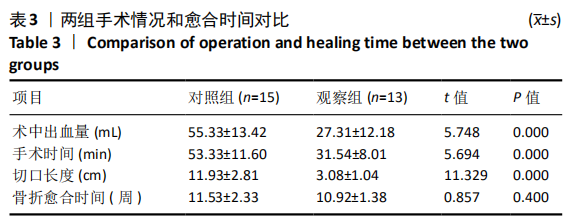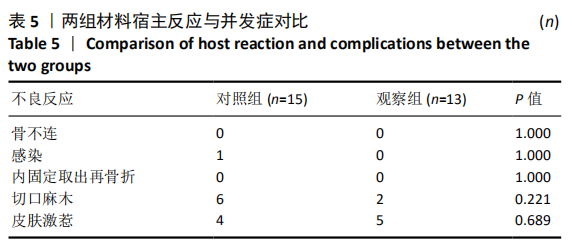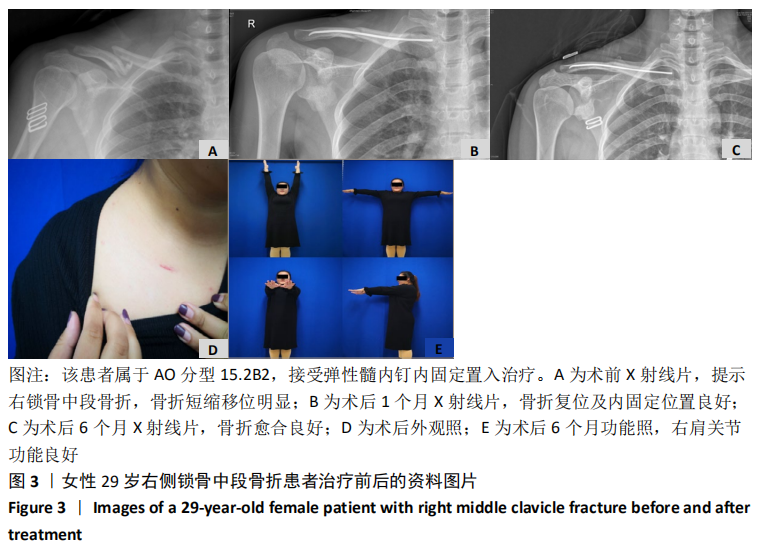[1] POSTACCHINI F, GUMINA S, DE SANTIS P, et al. Epidemiology of clavicle fractures. J Shoulder Elbow Surg. 2002;11(5):452-456.
[2] AMER K, SMITH B, THOMSON JE, et al. Operative Versus Nonoperative Outcomes of Middle-Third Clavicle Fractures: A Systematic Review and Meta-Analysis. J Orthop Trauma. 2020;34(1):e6-e13.
[3] LENZA M, BELLOTI JC, GOMES DOS SANTOS JB, et al. Surgical interventions for treating acute fractures or non-union of the middle third of the clavicle. Cochrane Database Syst Rev. 2009;7(4):CD007428.
[4] HULSMANS MH , VAN HEIJL M, HOUWERT RM, et al. Surgical fixation of midshaft clavicle fractures: A systematic review of biomechanical studies. Injury. 2018;49(4):753-765.
[5] FUGLESANG HFS, FLUGSRUD GB, RANDSBORG PH, et al. Five-year follow-up results of a randomized controlled study comparing intramedullary nailing with plate fixation of completely displaced midshaft fractures of the clavicle in adults. JBJS Open Access. 2018;3(4):e0009.
[6] ŠIMEK J, ŠMEJKAL K, FRANK M, et al. Surgical Treatment of Clavicle Midshaft Fractures - Prospective Randomized Trial. Acta Chir Orthop Traumatol Cech. 2020;87(2):101-107.
[7] FUGLESANG HFS, FLUGSRUD GB, RANDSBORG PH, et al. Plate fixation versus intramedullary nailing of completely displaced midshaft fractures of the clavicle: a prospective randomised controlled trial. Bone Joint J. 2017;99-B(8):1095-1101.
[8] LAZARIDES S, ZAFIROPOULOS G. Conservative treatment of fractures at the middle third of the clavicle. The relevance of shortening and clinical outcome. J Shoulder Elbow Surg. 2006;15(2):191-194.
[9] VANNABOUATHONG C, CHIU J, PATEL R, et al. An evaluation of treatment options for medial, midshaft, and distal clavicle fractures: a systematic review and meta-analysis. JSES Int. 2020;4(2):256-271.
[10] HOUWERT RM, WIJDICKS FJ, STEINS BISSCHOP C, et al. Plate fixation versus intramedullary fixation for displaced mid-shaft clavicle fractures: a systematic review. Int orthop. 2012;36(3):579-585.
[11] YOU JM, WU YS, WANG Y. Comparison of post-operative numbness and patient satisfaction using minimally invasive plate osteosynthesis or open plating for acute displaced clavicular shaft fractures. Int J Surg. 2018;56:21-25.
[12] EICHINGER JK, BALOG TP, GRASSBAUGH JA. Intramedullary Fixation of Clavicle Fractures: Anatomy, Indications, Advantages, and Disadvantages. J Am Acad Orthop Surg. 2016;24(7):455-464.
[13] GOVINDASAMY R, KASIRAJAN S, MELEPPURAM JJ, et al. A retrospective study of titanium elastic stable intramedullary nailing in displaced mid-shaft clavicle fractures. Rev Bras Ortop. 2016;52(3):270-277.
[14] VANDER MEIJDEN OA, HOUWERT RM, HULSMANS M, et al. Operative treatment of dislocated midshaft clavicular fractures: plate or intramedullary nail fixation? A randomized controlled trial. J Bone Joint Surg Am. 2015;97(8):613-619.
[15] FUGLESANG HFS, OKSUM MA, WIKERØY AKB. Mini-Invasive Intramedullary Fixation of Displaced Midshaft Clavicle Fractures with an Elastic Titanium Nail. JBJS Essent Surg Tech. 2018;8(2):e16.
[16] 赵志辉,陈居文,王永清,等.弹性带锁髓内钉与锁定钢板治疗锁骨中段骨折的疗效比较[J].中华骨科杂志,2019,39(16):1029-1036.
[17] HOOGERVORST P, VAN DAM T, VERDONSCHOT N, et al. Functional outcomes and complications of intramedullary fixation devices for Midshaft clavicle fractures: a systematic review and meta-analysis. BMC Musculoskelet Disord. 2020;21(1):395.
[18] ANDRADE-SILVA FB, KOJIMA KE, JOERIS A, et al. Single, superiorly placed reconstruction plate compared with flexible intramedullary nailing for midshaft clavicular fractures: a prospective, randomized controlled trial. J Bone Joint Surg Am. 2015;97(8):620-626.
[19] WOLTZ S, STEGEMAN SA, KRIJNEN P, et al. Plate fixation compared with nonoperative treatment for displaced midshaft clavicular fractures: a multicenter randomized controlled trial. J Bone Joint Surg Am. 2017; 99(2):106-112.
[20] MILLETT PJ, HURST JM, HORAN MP, et al. Complications of clavicle fractures treated with intramedullary fixation. J Shoulder Elbow Surg. 2011;20(1):86-91.
[21] KING PR, IKRAM A, LAMBERTS RP. The treatment of clavicular shaft fractures with an innovative locked intramedullary device. J Shoulder Elbow Surg. 2015;24(1):e1-e6.
|













